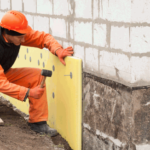Plastering is a fundamental aspect of construction and renovation, playing a vital role in creating smooth and polished surfaces. In this comprehensive guide, we will delve into the world of plastering, exploring its various types, essential tools and materials, step-by-step techniques, and strategies for finding plastering work opportunities.
Whether you are a seasoned professional or an aspiring plasterer, this article aims to equip you with the knowledge and insights needed to excel in the field. So, let’s explore the intricacies of plastering and discover the pathways to securing rewarding plastering work.

What Is Plastering?
Plastering is a crucial aspect of construction work, involving the application of a smooth, durable finish to walls, ceilings, and other surfaces within residential and commercial projects.
It plays a vital role in enhancing the overall aesthetics and structural integrity of a building. Skilled plasterers have the expertise to apply various types of plaster, such as lime plaster, cement plaster, or gypsum plaster, ensuring that the surfaces are not only visually appealing but also well-protected.
The precision and attention to detail required in plastering demand a high level of craftsmanship and knowledge of materials, making it an essential component of the construction industry.

What Are The Different Types Of Plastering?
Plastering encompasses various techniques and approaches, including traditional plastering, dry lining plastering, Venetian plastering, rendering plastering, and skimming plastering, each offering distinct applications and aesthetic effects.
Traditional Plastering
Traditional plastering relies on time-honored methods and materials to create a smooth, durable finish on interior and exterior surfaces, showcasing the craftsmanship and expertise of skilled plastering artisans.
The materials used in traditional plastering often include lime, sand, and water, which are mixed to form a plaster that bonds well with various surfaces. Application methods involve troweling the plaster onto walls or ceilings in multiple layers, allowing each coat to dry before adding the next. These techniques have been passed down through generations, reflecting the cultural significance of preserving these time-honored practices and the respect for traditional craftsmanship in construction and design.
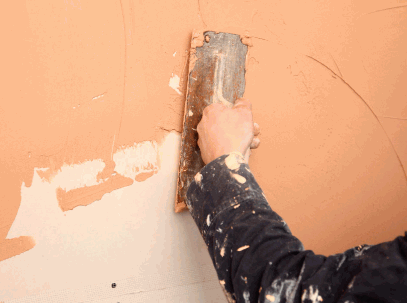
Dry Lining Plastering
Dry lining plastering involves the use of plasterboard or drywall to create smooth, even surfaces, providing a cost-effective and efficient approach to interior finishing in construction projects.
This method eliminates the need for wet plaster, reducing drying times and allowing for quicker project completion. Dry lining offers improved thermal and acoustic insulation properties, enhancing the overall quality of the construction. The materials used, such as plasterboard and adhesive compounds, contribute to a lighter and more flexible structure, making it easier to work with and transport.
Dry lining plastering has become an essential technique in modern construction, aligning with the industry’s focus on efficiency, sustainability, and cost-effectiveness.
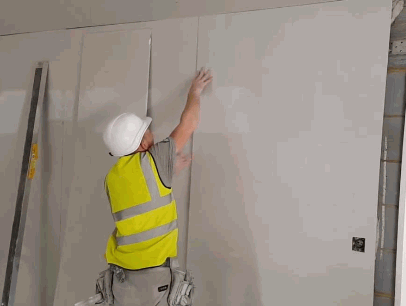
Venetian Plastering
Venetian plastering, with its luxurious and polished finish, is a sought-after choice for enhancing the aesthetic appeal of both residential and commercial properties, adding timeless elegance and sophistication to interior surfaces.
Its versatility allows it to be applied to a variety of surfaces such as walls, ceilings, and columns, creating a seamless and lustrous appearance. In residential settings, Venetian plastering can transform ordinary living spaces into stunning, richly textured areas, imparting a sense of old-world charm.
In commercial projects, it offers a unique way to showcase opulence and style, making it a popular option for luxury hotels, upscale restaurants, and high-end retail spaces. Whether used to achieve a classic or contemporary look, Venetian plastering exudes refinement and stands as a testament to exceptional craftsmanship.
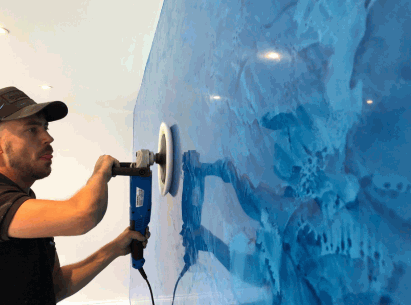
Rendering Plastering
Rendering plastering involves the application of a sand and cement mixture to exterior walls, providing weatherproofing, insulation, and aesthetic enhancements to buildings, making it a crucial component of exterior finishes in construction projects.
It plays a vital role in protecting structures from the elements, such as wind, rain, and temperature fluctuations. The application of the mixture creates a durable and protective barrier, ensuring the longevity of the building.
Rendering plastering helps in improving the thermal performance of the walls, thus contributing to energy efficiency. It enhances the visual appeal of a building, offering a seamless and beautiful finish that can be customized to suit various architectural styles.
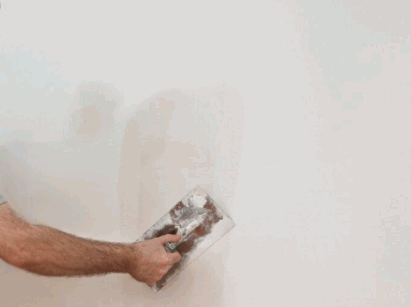
Skimming Plastering
Skimming plastering involves the application of a thin layer of finishing plaster to achieve a smooth, flawless surface, making it an essential technique for achieving impeccable interior finishes in construction projects.
This process plays a crucial role in achieving a high-quality finish, as it helps to cover any imperfections or irregularities in the underlying surface, creating a seamless and professional appearance. Skimming plastering is typically carried out using specialized materials such as high-quality plaster, trowels, and floats, and requires precision and skill to ensure an even and consistent application.
The technique not only enhances the visual appeal of interior spaces but also provides a durable and long-lasting finish, making it a valuable aspect of construction and renovation projects.
Take a look: How To Plaster Skim A Wall
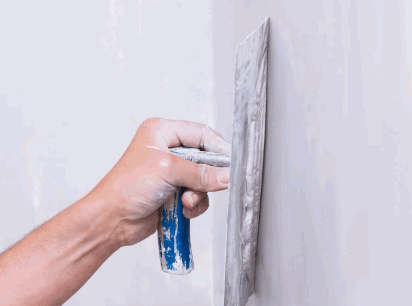
What Are The Tools And Materials Needed For Plastering?
Plastering requires a specific set of tools and materials, including trowels, plastering hawks, plastering floats, plastering darbies, mixing buckets, plastering brushes, and plastering beads, each serving a distinct purpose in achieving precise and professional results.
Trowels are essential for applying and smoothing the plaster while plastering hawks and floats help in holding and spreading the material. Plastering darbies are crucial for ensuring a level surface, and mixing buckets facilitate the accurate preparation of the plaster mixture.
Plastering brushes are used for texturing and applying decorative finishes while plastering beads aid in creating clean edges and corners. The careful selection and use of these tools and materials are integral to the successful completion of any plastering project.
Trowels
Trowels are indispensable tools in plastering, used for applying and smoothing plaster onto surfaces, ensuring the even distribution and meticulous finishing of the plaster layer.
They come in various types, each serving specific purposes. A pointing trowel, for instance, is ideal for detailed work in corners and tight spaces, while a gauging trowel is more suited for mixing and applying small quantities of plaster.
The finishing trowel, on the other hand, is designed to achieve a smooth and polished surface. These different trowels play a crucial role in achieving precise and consistent plaster finishes, making them essential in the construction tool arsenal.
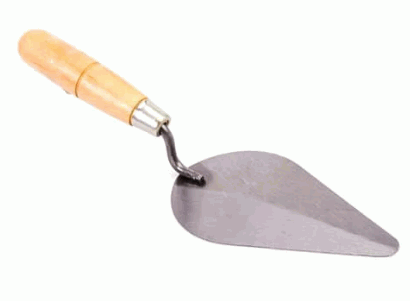
Plastering Hawk
A plastering hawk is a flat, square board with a handle, serving as a portable platform for holding and carrying plaster, facilitating ease of access and application during the plastering process.
It allows the plasterer to scoop up plaster from a larger container and then hold and maneuver it effortlessly while applying it to the wall or ceiling. The flat surface provides a stable base for the plaster, ensuring a smooth and consistent application. This tool effectively enhances the efficiency as it minimizes the need to frequently return to the main source of plaster, enabling uninterrupted work. Its design also promotes precision, enabling the plasterer to control the amount and evenness of application.
The plastering hawk plays a crucial role in streamlining the plastering workflow, ensuring a seamless and professional finish.
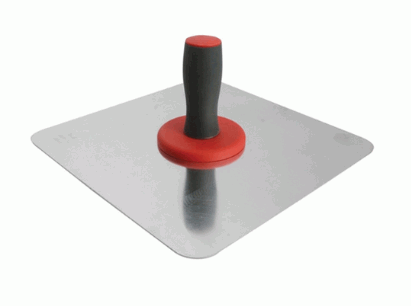
Plastering Float
A plastering float is a smoothing tool used to achieve a uniform and polished surface on freshly applied plaster, ensuring a flawless finish and professional quality in plastering work.
It is an essential tool in the construction industry, designed to level and smooth out the surface by pressing and moving the wet plaster. The float’s flat base and handle allow for easy manipulation and control, enabling the user to create a seamless and even texture.
The use of a plastering float helps to eliminate imperfections and air pockets, resulting in a pristine and durable plaster surface. Its versatility and effectiveness make it a must-have for any professional or DIY enthusiast involved in plastering projects.
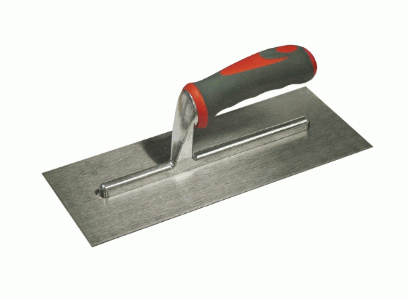
Plastering Darby
A plastering darby, also known as a feather edge, is a straight-edge tool used to level and straighten plaster surfaces, ensuring uniformity and precision in the application of plaster coatings.
This essential tool is particularly valuable in achieving a smooth and even plaster finish by smoothing out any irregularities and removing excess material. By using a plastering darby, construction workers can effectively maintain the desired thickness and alignment of plaster across large surfaces, thus ensuring a high-quality end result. Its role in maintaining consistency and precision makes it indispensable for professionals in the construction industry, contributing to the durability and aesthetics of plastered walls and ceilings.
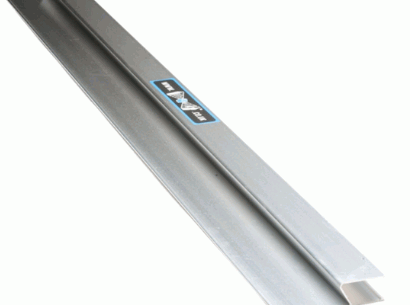
Mixing Bucket
A mixing bucket is an essential container for preparing plaster mixes, ensuring the accurate measurement and consistent blending of plaster and water to achieve the desired consistency and workability for plastering applications.
It facilitates the proper incorporation of additives, such as bonding agents or pigments, into the plaster mixture, allowing for customized finishes. The durable construction of mixing buckets, often made from high-quality plastics or metals, ensures their longevity and resistance to the corrosive nature of plaster materials. The wide, sturdy handles and spouts on some mixing buckets make the pouring and application of the plaster mix more manageable and less messy, streamlining the overall plastering process. The mixing bucket plays a pivotal role in maintaining precise mixtures for efficient and effective plastering work, making it an indispensable tool for construction professionals.
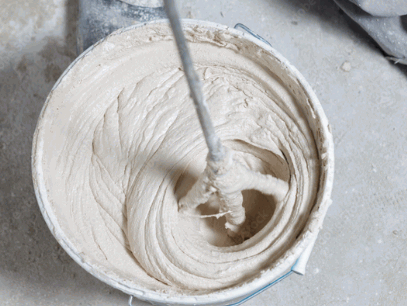
Plastering Brushes
Plastering brushes are specialized tools used for applying and texturing plaster surfaces, allowing for creative and customized finishes, and adding artistic and decorative elements to plastering work.
They come in various types, including:
- bristle brushes
- float brushes
- hawking trowels
each serving a distinct purpose in the plastering process. Bristle brushes are ideal for creating textured finishes, while float brushes are perfect for smoothing and leveling plaster surfaces. Hawking trowels are used for applying thicker plaster coatings. These brushes play a crucial role in achieving unique textures and effects, giving surfaces a tactile and visually appealing appearance. They are commonly used in construction, interior design, and renovation projects to create distinctive plaster finishes.
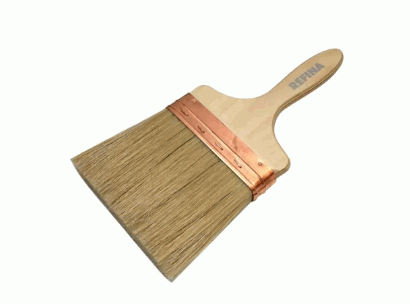
Plastering Beads
Plastering beads, made of metal or PVC, provide straight and clean edges for plastered corners and reveals, enhancing structural stability and visual appeal in plastering applications.
They offer a practical solution for achieving precise and visually appealing corner finishes in plastering work. By ensuring the corners are straight and sharp, plastering beads contribute to a more professional and polished look. They help to protect the corners from damage and wear over time, thereby prolonging the durability of the plastered surfaces.
The use of plastering beads ultimately leads to a more efficient and aesthetically pleasing construction project, providing a seamless transition between different wall and ceiling materials.
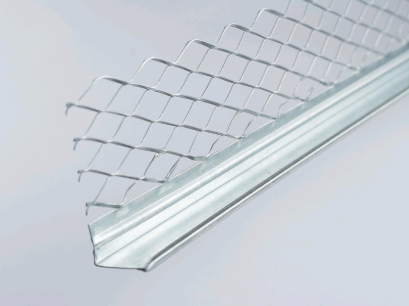
What Are The Steps For Plastering?
The process of plastering involves several key steps, including:
- Preparation is crucial and involves clearing the area, ensuring a clean and stable surface, and applying a bonding agent as needed.
- Mixing the plaster requires precise measurements and thorough blending to achieve the right consistency.
- Applying the plaster must be done skillfully using a hawk and trowel to attain an even and uniform coat.
- Smoothing and finishing the surface, demands expertise and the use of a float and trowel to create a seamless, polished result.
Each stage demands attention to detail and a grasp of proper techniques for a successful plastering outcome.
Preparation
Preparation is a critical phase in the plastering process, involving surface cleaning, priming, and ensuring the appropriate condition of the substrate to facilitate optimal adhesion and quality of the plaster application.
It is essential to thoroughly clean the surface to remove any dirt, dust, or debris that could hinder the bonding of the plaster. Proper priming helps seal the surface, enhancing adhesion, and preventing excessive absorption of moisture from the plaster.
Evaluating the substrate’s condition, and addressing any cracks or unevenness using suitable construction materials and techniques such as leveling compounds, ensures a smooth and stable base for the plaster. These preparatory measures are crucial for achieving a durable and visually appealing plaster finish.
Mixing The Plaster
Mixing the plaster involves the accurate blending of plaster and water to achieve the desired consistency and workability, ensuring the optimal application and adhesion of the plaster to the prepared surfaces.
This process demands precise measurements of both the plaster and water, as even a small variation can significantly affect the final plaster’s quality. Achieving the right consistency is crucial as it directly impacts the plaster’s ability to spread evenly and adhere effectively to the surface.
A thorough mixing process ensures the elimination of lumps and air pockets, which could otherwise compromise the integrity of the plaster finish. Properly mixed plaster is essential for creating durable and aesthetically pleasing surfaces in construction projects.
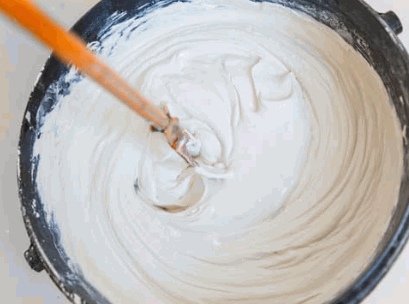
Applying The Plaster
Applying the plaster requires skill and precision, utilizing specialized tools and techniques to achieve even and consistent coverage, ensuring the integrity and visual appeal of the plastered surface.
The process typically involves the use of trowels to spread the plaster smoothly and evenly across the surface, while hawk and float help in achieving a seamless finish. Experienced plasterers often employ the technique of feathering, where subtle blends and transitions are created, resulting in a flawless surface.
The application of plaster also demands attention to detail, ensuring that the mix consistency, drying time, and environmental conditions are carefully managed for optimal results.
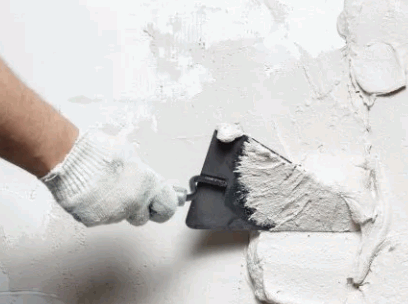
Smoothing And Finishing
Smoothing and finishing the plaster surface involves meticulous techniques and tools to achieve a flawless and polished appearance, ensuring the aesthetic and functional quality of the completed plastering work.
The choice of materials is crucial in achieving a smooth plaster finish. High-quality gypsum plaster and lime plaster are commonly used for their workability and ability to create a refined surface. Skilled craftsmen utilize trowels, spatulas, and floats to meticulously apply and level the plaster, ensuring evenness and eliminating imperfections. Attention to detail during the application process, including proper curing and sanding, contributes to the durability and elegance of the finished plaster surface.
The combination of expertise, precision, and premium materials is integral to achieving a superior plaster finish in construction projects.
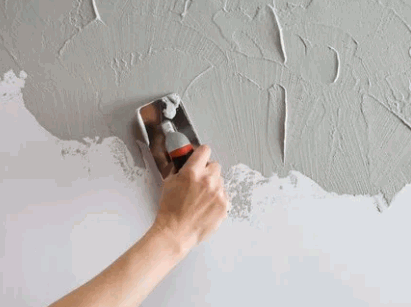
How To Find Plastering Work?
Finding plastering work involves proactive strategies such as networking, utilizing online job platforms, and leveraging local advertisements and listings to explore job opportunities within the construction industry.
Networking plays a crucial role in expanding your professional contacts within the construction industry, connecting with contractors, and staying updated on potential job openings.
Online job platforms, such as specialized construction job boards and general job search websites, allow you to access a wide range of plastering job listings, presenting opportunities to apply for positions that match your skills and experience.
Local advertising through community bulletin boards, social media groups, and industry publications can help you reach out to potential clients and employers in your area.
Networking And Word-Of-Mouth
Networking and word-of-mouth referrals play a pivotal role in accessing plastering job opportunities, and enabling connections with building contractors, construction trade professionals, and potential clients within the industry.
Building strong professional relationships through networking can lead to a steady stream of referrals, which are often more reliable and fruitful than traditional job searches. By nurturing these connections, plasterers can gain access to exclusive job opportunities and projects that might not be publicly advertised.
Leveraging word-of-mouth referrals can also enhance a plasterer’s reputation and credibility, as satisfied clients are more likely to recommend their services to others. This organic approach to accessing job opportunities can set plasterers apart in a competitive market and establish a solid foundation for long-term career success.
Online Job Platforms
Online job platforms provide a convenient avenue for accessing plastering job opportunities, offering avenues for subcontracting, bidding on projects, and connecting with building projects in need of skilled plastering work.
These platforms effectively bridge the gap between skilled plasterers and potential clients, allowing for seamless interaction and collaboration. Subcontracting opportunities can be readily found, enabling plasterers to take on a variety of projects that align with their expertise. The option to bid on projects empowers individuals to showcase their capabilities and secure lucrative assignments.
By engaging with online job platforms, plasterers can tap into a diverse range of construction projects seeking their specialized services, thereby maximizing their earning potential.
Local Advertisements And Listings
Local advertisements and listings serve as valuable channels for discovering plastering job opportunities and showcasing connections with construction companies, building projects, and home improvement initiatives requiring skilled plastering services.
They act as a bridge between skilled plasterers and construction firms looking for expertise in enhancing their projects with high-quality plastering work. These advertisements also cater to homeowners seeking professional plastering services for renovation and remodeling ventures.
By providing a platform for plasterers to display their expertise and connect with potential clients, local advertisements and listings play a crucial role in sustaining the demand for skilled plastering services in the construction and home improvement sectors.

